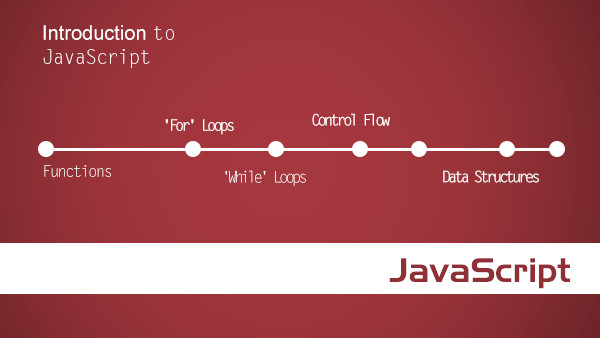一.概述
二.安装环境
三.安装Fabric SDK Go
四.启动区块链网络
五.使用Fabric SDK Go
一. 概述
首先,为新入门的开发小白普及一下何为SDK
软件开发工具包(外语首字母缩写:SDK、外语全称:Software Development Kit)一般都是一些软件工程师为特定的软件包、软件框架、硬件平台、操作系统等建立应用软件时的开发工具的集合。软件开发工具包括广义上指辅助开发某一类软件的相关文档、范例和工具的集合。软件开发工具包是一些被软件工程师用于为特定的软件包、软件框架、硬件平台、操作系统等创建应用软件的开发工具的集合,一般而言SDK即开发 Windows 平台下的应用程序所使用的 SDK。它可以简单的为某个程序设计语言提供应用程序接口 API 的一些文件,但也可能包括能与某种嵌入式系统通讯的复杂的硬件。一般的工具包括用于调试和其他用途的实用工具。SDK 还经常包括示例代码、支持性的技术注解或者其他的为基本参考资料澄清疑点的支持文档。为了鼓励开发者使用其系统或者语言,许多 SDK 是免费提供的。
Farbric的Peer节点和Orderer节点都提供了基于GRPC协议(Google开发的远程过程调用RPC)的接口,通过这些接口可以和Peer节点与Orderer节点进行命令/数据交互,为了简化开发,官方提供了多语言版本的SDK,官网原文
Hyperledger Fabric SDKsHyperledger Fabric intends to offer a number of SDKs for a wide variety of programming languages. The first two delivered are the Node.js and Java SDKs. We hope to provide Python, REST and Go SDKs in a subsequent release.Hyperledger Fabric Node SDK documentation.Hyperledger Fabric Java SDK documentation.
实际上目前主流支持的已经有Go版本了,列出主流的三个:
Fabric Nodejs SDK
Fabric Java SDK
Fabric Go SDK
考虑到Golang是Fabric原生的开发语言,Fabric,Fabric-ca,Chaincode都是采用Golang开发的,所以本文还是围绕Golang版本的Fabric SDK进行阐述SDK的安装部署与测试。
二.安装环境
在Ubuntu 16.04上发布,但Hyperledger Fabric架构与Mac OS X,Windows和其他Linux发行版兼容。Hyperledger Fabric使用Docker轻松部署区块链网络。 另外,一些组件(同级)也部署docker容器来分离数据(通道)。 所以请确保所使用的平台支持这种虚拟化。
查看Docker版本
需要Docker版本17.03.0-ce或更高版本。
$docker -v
返回结果
Docker version 17.12.1-ce, build 7390fc6
查看Docker-Compose版本
$docker-compose version
返回结果
docker-compose version 1.17.1, build unknowndocker-py version: 2.5.1CPython version: 2.7.15rc1OpenSSL version: OpenSSL 1.1.0g 2 Nov 2017
查看Golang版本
需要版本1.9.x或更高版本
$go version
返回结果
go version go1.10.3 linux/amd64
查看GOPATH,GOROOT,GOBIN环境变量
$ go env |egrep 'GOROOT|GOPATH|GOBIN'
返回结果
GOBIN="/home/bruce/go/bin"GOPATH="/home/bruce/go"GOROOT="/usr/local/go"
三.安装Fabric SDK Go
安装依赖包
$ sudo apt update
$ sudo apt install libltdl-dev安装SDK
(1) 下载软件包
$ go get -u github.com/hyperledger/fabric-sdk-go
(2) 安装依赖包
$ cd $GOPATH/src/github.com/hyperledger/fabric-sdk-go $ chmod +x test/scripts/*.sh # make depend-install操作会调用dependencies.sh脚本$ make depend //注意1.1.0版本是make depend-install
以上命令会下载如下依赖包并安装至$GOBIN目录下
github.com/axw/gocov/...github.com/AlekSi/gocov-xmlgithub.com/client9/misspell/cmd/misspellgithub.com/golang/lint/golintgolang.org/x/tools/cmd/goimportsgithub.com/golang/mock/mockgen
安装完成后检查$GOBIN目录下文件
-rwxrwxr-x 1 bruce bruce 13128127 Jul 19 17:38 dep-rwxrwxr-x 1 bruce bruce 4332114 Jul 19 17:50 gocov-rwxrwxr-x 1 bruce bruce 2752093 Jul 19 17:50 gocov-xml-rwxrwxr-x 1 bruce bruce 5220554 Jul 19 17:50 goimports-rwxrwxr-x 1 bruce bruce 5669065 Jul 19 17:50 golint-rwxrwxr-x 1 bruce bruce 9470763 Jul 19 17:50 misspell-rwxrwxr-x 1 bruce bruce 5070526 Jul 19 17:51 mockgen
(3) 安装vendor
$ make populate
返回结果
Populate script last ran 07-21-2018 on revision e230c04e with Gopkg.lock revision d489eba9Populating vendor ...Populating dockerd vendor ...Cloning into 'scripts/_go/src/chaincoded/vendor/github.com/hyperledger/fabric'...remote: Counting objects: 4530, done.remote: Compressing objects: 100% (3778/3778), done.remote: Total 4530 (delta 543), reused 2596 (delta 376), pack-reused 0Receiving objects: 100% (4530/4530), 16.51 MiB | 120.00 KiB/s, done.Resolving deltas: 100% (543/543), done.
四.启动区块链网络
准备环境
为了构建区块链网络,使用docker构建处理不同角色的虚拟计算机。 在这里我们将尽可能保持简单。 Hyperledger Fabric需要大量证书来确保在整个端到端流程(TSL,身份验证,签名块......)期间进行加密。 创建这些文件需要一点时间,为了直接了解问题的核心,我们已经在此存储库的文件夹中为您准备了所有相关内容。
在GOPATH的src文件夹中新建一个目录如下:
$ mkdir -p $GOPATH/src/github.com/ticket$ cd $GOPATH/src/github.com/ticket
新建fixtures文件夹
$ mkdir fixtures
将 channel-artifacts 及 crypto-config 两个文件夹复制到 fixture 目录中
$ cd fixtures$ sudo cp -r ~/hyfa/fabric-samples/first-network/channel-artifacts .$ sudo cp -r ~/hyfa/fabric-samples/first-network/crypto-config .
将 channel-artifacts 文件夹名称修改为 artifacts
$ mv channel-artifacts/ artifacts
移除无用的文件
$ sudo rm -f artifacts/.gitkeep
修改配置
将 fabric-samples/basic-network/docker-compose.yml 文件复制至当前的 fixtures 目录下, 进行编辑
$ sudo cp ~/hyfa/fabric-samples/basic-network/docker-compose.yml ./$ sudo vim docker-compose.yml
(1) 修改网络模式
version: '2'networks: default:
(2) orderer部分
services: orderer.example.com: container_name: orderer.example.com image: hyperledger/fabric-orderer environment: - ORDERER_GENERAL_LOGLEVEL=debug - ORDERER_GENERAL_LISTENADDRESS=0.0.0.0 - ORDERER_GENERAL_GENESISMETHOD=file - ORDERER_GENERAL_GENESISFILE=/var/hyperledger/orderer/orderer.genesis.block - ORDERER_GENERAL_LOCALMSPID=OrdererMSP - ORDERER_GENERAL_LOCALMSPDIR=/var/hyperledger/orderer/msp - ORDERER_GENERAL_LISTENPORT=7050 # enabled TLS - ORDERER_GENERAL_TLS_ENABLED=true - ORDERER_GENERAL_TLS_PRIVATEKEY=/var/hyperledger/orderer/tls/server.key - ORDERER_GENERAL_TLS_CERTIFICATE=/var/hyperledger/orderer/tls/server.crt - ORDERER_GENERAL_TLS_ROOTCAS=[/var/hyperledger/orderer/tls/ca.crt, /var/hyperledger/peerOrg1/tls/ca.crt, /var/hyperledger/peerOrg2/tls/ca.crt] working_dir: /opt/gopath/src/github.com/hyperledger/fabric command: orderer ports: - 7050:7050 volumes: - ./artifacts/genesis.block:/var/hyperledger/orderer/orderer.genesis.block - ./crypto-config/ordererOrganizations/example.com/orderers/orderer.example.com/msp:/var/hyperledger/orderer/msp - ./crypto-config/ordererOrganizations/example.com/orderers/orderer.example.com/tls:/var/hyperledger/orderer/tls - ./crypto-config/peerOrganizations/org1.example.com/peers/peer0.org1.example.com/:/var/hyperledger/peerOrg1 - ./crypto-config/peerOrganizations/org2.example.com/peers/peer0.org2.example.com/:/var/hyperledger/peerOrg2 networks: default: aliases: - orderer.example.com
(3) ca配置
ca.org1.example.com: image: hyperledger/fabric-ca environment: - FABRIC_CA_HOME=/etc/hyperledger/fabric-ca-server - FABRIC_CA_SERVER_CA_NAME=ca.org1.example.com - FABRIC_CA_SERVER_CA_CERTFILE=/etc/hyperledger/fabric-ca-server-config/ca.org1.example.com-cert.pem - FABRIC_CA_SERVER_CA_KEYFILE=/etc/hyperledger/fabric-ca-server-config/b4a9a9585aebe52646e1987d4eca4a0ecf3f0ab688ca7924c07249c0303553ba_sk - FABRIC_CA_SERVER_TLS_ENABLED=true - FABRIC_CA_SERVER_TLS_CERTFILE=/etc/hyperledger/fabric-ca-server-config/ca.org1.example.com-cert.pem - FABRIC_CA_SERVER_TLS_KEYFILE=/etc/hyperledger/fabric-ca-server-config/b4a9a9585aebe52646e1987d4eca4a0ecf3f0ab688ca7924c07249c0303553ba_sk ports: - "7054:7054" command: sh -c 'fabric-ca-server start -b admin:adminpw -d' volumes: - ./crypto-config/peerOrganizations/org1.example.com/ca/:/etc/hyperledger/fabric-ca-server-config container_name: ca.org1.example.com networks: default: aliases: - ca.org1.example.com
注意:
FABRIC_CA_SERVER_CA_KEYFILE与FABRIC_CA_SERVER_TLS_KEYFILE的参数值需要设置成
...fixtures/crypto-config/peerOrganizations/org1.example.com/ca目录下面的私钥文件,否则会启动失败,报错证书与秘钥不匹配。
(4) Peer配置
peer0.org1.example.com 内容如下
peer0.org1.example.com:
image: hyperledger/fabric-peer
container_name: peer0.org1.example.com
environment:peer0.org1.example.com
CORE_VM_ENDPOINT=unix:///host/var/run/docker.sock
CORE_VM_DOCKER_ATTACHSTDOUT=true
CORE_LOGGING_LEVEL=DEBUG
CORE_PEER_NETWORKID=bill
CORE_PEER_PROFILE_ENABLED=true
CORE_PEER_TLS_ENABLED=true
CORE_PEER_TLS_CERT_FILE=/var/hyperledger/tls/server.crt
CORE_PEER_TLS_KEY_FILE=/var/hyperledger/tls/server.key
CORE_PEER_TLS_ROOTCERT_FILE=/var/hyperledger/tls/ca.crt
CORE_PEER_ID=peer0.org1.example.com
CORE_PEER_ADDRESSAUTODETECT=true
CORE_PEER_ADDRESS=peer0.org1.example.com:7051
CORE_PEER_GOSSIP_EXTERNALENDPOINT=peer0.org1.example.com:7051
CORE_PEER_GOSSIP_USELEADERELECTION=true
CORE_PEER_GOSSIP_ORGLEADER=false
CORE_PEER_GOSSIP_SKIPHANDSHAKE=true
CORE_PEER_LOCALMSPID=Org1MSP
CORE_PEER_MSPCONFIGPATH=/var/hyperledger/msp
CORE_PEER_TLS_SERVERHOSTOVERRIDE=peer0.org1.example.com
working_dir: /opt/gopath/src/github.com/hyperledger/fabric/peer
command: peer node start
volumes:/var/run/:/host/var/run/
./crypto-config/peerOrganizations/org1.example.com/peers/peer0.org1.example.com/msp:/var/hyperledger/msp
./crypto-config/peerOrganizations/org1.example.com/peers/peer0.org1.example.com/tls:/var/hyperledger/tls
ports:7051:7051
7053:7053
depends_on:orderer.example.com
links:orderer.example.com
networks:
default:
aliases:
peer1.org1.example.com内容如下
peer1.org1.example.com:
image: hyperledger/fabric-peer
container_name: peer1.org1.example.com
environment:peer1.org1.example.com
CORE_VM_ENDPOINT=unix:///host/var/run/docker.sock
CORE_VM_DOCKER_ATTACHSTDOUT=true
CORE_LOGGING_LEVEL=DEBUG
CORE_PEER_NETWORKID=bill
CORE_PEER_PROFILE_ENABLED=true
CORE_PEER_TLS_ENABLED=true
CORE_PEER_TLS_CERT_FILE=/var/hyperledger/tls/server.crt
CORE_PEER_TLS_KEY_FILE=/var/hyperledger/tls/server.key
CORE_PEER_TLS_ROOTCERT_FILE=/var/hyperledger/tls/ca.crt
CORE_PEER_ID=peer1.org1.example.com
CORE_PEER_ADDRESSAUTODETECT=true
CORE_PEER_ADDRESS=peer1.org1.example.com:7051
CORE_PEER_GOSSIP_EXTERNALENDPOINT=peer1.org1.example.com:7051
CORE_PEER_GOSSIP_USELEADERELECTION=true
CORE_PEER_GOSSIP_ORGLEADER=false
CORE_PEER_GOSSIP_SKIPHANDSHAKE=true
CORE_PEER_LOCALMSPID=Org1MSP
CORE_PEER_MSPCONFIGPATH=/var/hyperledger/msp
CORE_PEER_TLS_SERVERHOSTOVERRIDE=peer1.org1.example.com
working_dir: /opt/gopath/src/github.com/hyperledger/fabric/peer
command: peer node start
volumes:/var/run/:/host/var/run/
./crypto-config/peerOrganizations/org1.example.com/peers/peer1.org1.example.com/msp:/var/hyperledger/msp
./crypto-config/peerOrganizations/org1.example.com/peers/peer1.org1.example.com/tls:/var/hyperledger/tls
ports:8051:7051
8053:7053
depends_on:orderer.example.com
links:orderer.example.com
networks:
default:
aliases:
暂时只需要如上功能模块即可
将 fixtures 文件的所属修改为当前用户及组
$ sudo chown -R bruce:bruce ../fixtures
启动网络
为了检查网络是否正常工作,使用docker-compose同时启动或停止所有容器。 进入fixtures文件夹,运行:
$ cd $GOPATH/src/github.com/kongyixueyuan.com/bill/fixtures$ docker-compose up
启动完毕,将看到:两个peer,orderer和一个CA容器。 代表已成功创建了一个新的网络,可以随SDK一起使用。 要停止网络,请返回到上一个终端,按Ctrl+C并等待所有容器都停止。
CONTAINER ID IMAGE COMMAND CREATED STATUS PORTS NAMES932b5364664f hyperledger/fabric-peer "peer node start" 26 hours ago Up 26 hours 0.0.0.0:7051->7051/tcp, 0.0.0.0:7053->7053/tcp peer0.org1.example.comcf9385a5e1ae hyperledger/fabric-peer "peer node start" 26 hours ago Up 26 hours 0.0.0.0:8051->7051/tcp, 0.0.0.0:8053->7053/tcp peer1.org1.example.coma1cd2a83af57 hyperledger/fabric-orderer "orderer" 26 hours ago Up 26 hours 0.0.0.0:7050->7050/tcp orderer.example.com6a9a54d9d82b hyperledger/fabric-ca "/bin/sh -c 'fabric-…" 26 hours ago Up 26 hours 0.0.0.0:7054->7054/tcp ca.org1.example.com
提示 :当网络停止时,所有使用的容器都可以访问。 例如,这对检查日志非常有用。 可以用docker ps -a来看它们。 为了清理这些容器,需要使用docker rm $(docker ps -aq)将其删除,或者如果使用了docker-compose文件,请转至此文件的位置并运行docker-compose down 。
提示 :可以在后台运行docker-compose命令以保持提示。 为此,请使用参数-d ,如下所示: docker-compose up -d 。 要停止容器,请在docker-compose.yaml所在的文件夹中运行命令: docker-compose stop (或docker-compose down进行清理停止所有容器)。
五.使用Fabric SDK Go
1.创建配置文件
$ cd $GOPATH/src/github.com/ticket$ vim config.yaml
配置文件内容如下:
name: "ticket-network"# Describe what the target network is/does.description: "The network which will host my first blockchain"# Schema version of the content. Used by the SDK to apply the corresponding parsing rules.version: 2# The client section used by GO SDK.client: # Which organization does this application instance belong to? The value must be the name of an org organization: Org1 logging: level: info # Global configuration for peer, event service and orderer timeouts peer: timeout: connection: 3s queryResponse: 45s executeTxResponse: 30s eventService: timeout: connection: 3s registrationResponse: 3s orderer: timeout: connection: 3s response: 5s # Root of the MSP directories with keys and certs. The Membership Service Providers is component that aims to offer an abstraction of a membership operation architecture. cryptoconfig: path: "${GOPATH}/src/github.com/kongyixueyuan.com/bill/fixtures/crypto-config" # Some SDKs support pluggable KV stores, the properties under "credentialStore" are implementation specific credentialStore: path: "/tmp/bill-kvs" # [Optional]. Specific to the CryptoSuite implementation used by GO SDK. Software-based implementations requiring a key store. PKCS#11 based implementations does not. cryptoStore: path: "/tmp/bill-msp" # BCCSP config for the client. Used by GO SDK. It's the Blockchain Cryptographic Service Provider. # It offers the implementation of cryptographic standards and algorithms. BCCSP: security: enabled: true default: provider: "SW" hashAlgorithm: "SHA2" softVerify: true ephemeral: false level: 256 tlsCerts: systemCertPool: false# [Optional]. But most apps would have this section so that channel objects can be constructed based on the content below.# If one of your application is creating channels, you might not use thischannels: mychannel: orderers: - orderer.example.com # Network entity which maintains a ledger and runs chaincode containers in order to perform operations to the ledger. Peers are owned and maintained by members. peers: peer0.org1.example.com: # [Optional]. will this peer be sent transaction proposals for endorsement? The peer must # have the chaincode installed. The app can also use this property to decide which peers # to send the chaincode install request. Default: true endorsingPeer: true # [Optional]. will this peer be sent query proposals? The peer must have the chaincode # installed. The app can also use this property to decide which peers to send the # chaincode install request. Default: true chaincodeQuery: true # [Optional]. will this peer be sent query proposals that do not require chaincodes, like # queryBlock(), queryTransaction(), etc. Default: true ledgerQuery: true # [Optional]. will this peer be the target of the SDK's listener registration? All peers can # produce events but the app typically only needs to connect to one to listen to events. # Default: true eventSource: true peer1.org1.example.com:# List of participating organizations in this networkorganizations: Org1: mspid: Org1MSP cryptoPath: "peerOrganizations/org1.example.com/users/{userName}@org1.example.com/msp" peers: - peer0.org1.example.com - peer1.org1.example.com certificateAuthorities: - ca.org1.example.com# List of orderers to send transaction and channel create/update requests to.# The orderers consent on the order of transactions in a block to be committed to the ledger. For the time being only one orderer is needed.orderers: orderer.example.com: url: grpcs://localhost:7050 grpcOptions: ssl-target-name-override: orderer.example.com grpc-max-send-message-length: 15 tlsCACerts: path: "${GOPATH}/src/github.com/ticket/fixtures/crypto-config/ordererOrganizations/example.com/tlsca/tlsca.example.com-cert.pem"# List of peers to send various requests to, including endorsement, query and event listener registration.peers: peer0.org1.example.com: # this URL is used to send endorsement and query requests url: grpcs://localhost:7051 # this URL is used to connect the EventHub and registering event listeners eventUrl: grpcs://localhost:7053 # These parameters should be set in coordination with the keepalive policy on the server grpcOptions: ssl-target-name-override: peer0.org1.example.com grpc.http2.keepalive_time: 15 tlsCACerts: path: "${GOPATH}/src/github.com/ticket/fixtures/crypto-config/peerOrganizations/org1.example.com/tlsca/tlsca.org1.example.com-cert.pem" peer1.org1.example.com: url: grpcs://localhost:8051 eventUrl: grpcs://localhost:8053 grpcOptions: ssl-target-name-override: peer1.org1.example.com grpc.http2.keepalive_time: 15 tlsCACerts: # Certificate location absolute path path: "${GOPATH}/src/github.com/ticket/fixtures/crypto-config/peerOrganizations/org1.example.com/tlsca/tlsca.org1.example.com-cert.pem"# Fabric-CA is a special kind of Certificate Authority provided by Hyperledger Fabric which allows certificate management to be done via REST APIs.certificateAuthorities: ca.org1.example.com: url: https://localhost:7054 # the properties specified under this object are passed to the 'http' client verbatim when making the request to the Fabric-CA server httpOptions: verify: false registrar: enrollId: admin enrollSecret: adminpw caName: ca.org1.example.com以上配置文件模板可以通过config.yaml获取
编写初始化代码
创建一个blockchain的新文件夹,其中将包含与区块链网络通讯的所有接口。
$ mkdir blockchain$ vim blockchain/setup.go
代码如下
package blockchainimport ( "github.com/hyperledger/fabric-sdk-go/api/apitxn/resmgmtclient" "github.com/hyperledger/fabric-sdk-go/pkg/fabsdk" "github.com/hyperledger/fabric-sdk-go/pkg/config" "fmt" "github.com/hyperledger/fabric-sdk-go/api/apitxn/chmgmtclient" "time")//定义结构体type FabricSetup struct { ConfigFile string //sdk配置文件所在路径 ChannelID string //应用通道名称 ChannelConfig string //应用通道交易配置文件所在路径 OrgAdmin string // 组织管理员名称 OrgName string //组织名称 Initialized bool //是否初始化 Admin resmgmtclient.ResourceMgmtClient //fabric环境中资源管理者 SDK *fabsdk.FabricSDK //SDK实例}//1. 创建SDK实例并使用SDK实例创建应用通道,将Peer节点加入到创建的应用通道中func (f *FabricSetup) Initialize() error { //判断是否已经初始化 if f.Initialized { return fmt.Errorf("SDK已被实例化") } //创建SDK对象 sdk, err := fabsdk.New(config.FromFile(f.ConfigFile)) if err != nil { return fmt.Errorf("SDK实例化失败:%v", err) } f.SDK = sdk //创建一个具有管理权限的应用通道客户端管理对象 chmClient, err := f.SDK.NewClient(fabsdk.WithUser(f.OrgAdmin), fabsdk.WithOrg(f.OrgName)).ChannelMgmt() if err != nil { return fmt.Errorf("创建应用通道管理客户端管理对象失败,%v", err) } //获取当前的会话用户对象 session, err := f.SDK.NewClient(fabsdk.WithUser(f.OrgAdmin), fabsdk.WithOrg(f.OrgName)).Session() if err != nil { return fmt.Errorf("获取当前会话用户对象失败%v", err) } orgAdminUser := session //指定创建应用通道所需要的所有参数 /* $ peer channel create -o orderer.example.com:7050 -c $CHANNEL_NAME -f ./channel-artifacts/channel.tx --tls --cafile \ /opt/gopath/src/github.com/hyperledger/fabric/peer/crypto/ordererOrganizations/example.com/orderers/orderer.example.com/msp/tlscacerts/tlsca.example.com-cert.pem */ chReq := chmgmtclient.SaveChannelRequest{ChannelID: f.ChannelID, ChannelConfig: f.ChannelConfig, SigningIdentity: orgAdminUser} //创建应用通道 err = chmClient.SaveChannel(chReq) if err != nil { return fmt.Errorf("创建应用通道失败:%v", err) } time.Sleep(time.Second * 5) //创建一个管理资源的客户端对象 f.Admin, err = f.SDK.NewClient(fabsdk.WithUser(f.OrgAdmin)).ResourceMgmt() if err != nil { return fmt.Errorf("创建资源管理对象失败:%v", err) } //将peer 节点加入到应用通道中 err = f.Admin.JoinChannel(f.ChannelID) if err != nil { return fmt.Errorf("peer加入节点失败:%v", err) } f.Initialized = true fmt.Println("SDK实例化成功") return nil}该测试代码可以从blockchain/setup.go获取
在这个阶段
初始化一个客户端,它将与 peer,CA 和 orderer进行通信。
创建了一个新通道, 并将Peer节点加入到此通道中
编写测试代码
为了确保客户端能够初始化所有组件,将在启动网络的情况下进行简单的测试。 为了做到这一点,我们需要构建主程序代码进行功能调用
$ vim main.gopackage mainimport ( "FabricDev/ticket/blockchain" "os" "fmt")func main() { fsetup := blockchain.FabricSetup{ ConfigFile: "config.yaml", ChannelID: "mychannel", ChannelConfig: os.Getenv("GOPATH") + "src/github.com/ticket/fixtures/artifacts/channel.tx", OrgAdmin: "Admin", OrgName: "Org1", } err := fsetup.Initialize() if err != nil { fmt.Errorf("Fabric SDK初始化失败:%v", err) fmt.Println(err.Error()) }}代码模板:main.go
打包依赖关系
在开始编译之前,最后一件事是使用一个vendor目录来包含我们所有的依赖关系。 在我们的GOPATH中,我们有Fabric SDK Go和其他项目。 当尝试编译应用程序时,Golang会在GOPATH中搜索依赖项,但首先会检查项目中是否存在vendor文件夹。 如果依赖性得到满足,那么Golang就不会去看GOPATH或GOROOT。 这在使用几个不同版本的依赖关系时非常有用(可能会发生一些冲突,比如在例子中有多个BCCSP定义,通过使用像dep这样的工具来处理这些依赖关系在vendor目录中。
$ vim Gopkg.toml
配置文件内容
[[constraint]] name = "github.com/hyperledger/fabric" revision = "014d6befcf67f3787bb3d67ff34e1a98dc6aec5f"[[constraint]] name = "github.com/hyperledger/fabric-sdk-go" revision = "614551a752802488988921a730b172dada7def1d"
这是dep一个限制,以便在 vendor 中指定希望SDK转到特定版本。
保存该文件,然后执行此命令将vendor目录与项目的依赖关系同步:
$ dep ensure$ls vendor -l //查看vendor目录内容drwxrwxr-x 13 bruce bruce 4096 Jul 20 14:06 github.comdrwxrwxr-x 3 bruce bruce 4096 Jul 20 14:06 golang.orgdrwxrwxr-x 4 bruce bruce 4096 Jul 20 14:06 google.golang.orgdrwxrwxr-x 3 bruce bruce 4096 Jul 20 14:06 gopkg.in
5.构建代码
$go build //构建代码生成ticket可执行文件$ls ticket -l-rwxrwxr-x 1 bruce bruce 19784971 Jul 20 14:06 ticket
6.执行命令
$ ./ticket [fabric_sdk_go] 2018/07/21 09:19:23 UTC - config.initConfig -> INFO config fabric_sdk_go logging level is set to: INFOSDK实例化成功
7.清理环境
Fabric SDK生成一些文件,如证书,二进制文件和临时文件。 关闭网络不会完全清理环境,当需要重新启动时,这些文件将被重复使用以避免构建过程。 对于开发,可以快速测试,但对于真正的测试,需要清理所有内容并从头开始。
如何清理环境
关闭你的网络: cd $GOPATH/src/github.com/kongyixueyuan.com/bill/fixtures && docker-compose down
删除证书存储(在配置文件中,client.credentialStore中定义): rm -rf /tmp/bill-*
删除一些不是由docker-compose命令生成的docker容器和docker镜像:
docker rm -f -vdocker ps -a --no-trunc | grep "bill" | cut -d ' ' -f 12>/dev/null
和
docker rmidocker images --no-trunc | grep "bill" | cut -d ' ' -f 12>/dev/null
如何更有效率?
可以在一个步骤中自动完成所有这些任务。 构建和启动过程也可以自动化。 为此,将创建一个Makefile。 首先,确保 make 工具:
make --version
如果没有安装make (Ubuntu):
sudo apt install make
然后使用以下内容在项目的根目录下创建一个名为Makefile的文件:
$ cd $GOPATH/src/github.com/kongyixueyuan.com/bill$ vim Makefile.PHONY: all dev clean build env-up env-down runall: clean build env-up rundev: build run##### BUILDbuild: @echo "Build ..." @dep ensure @go build @echo "Build done"##### ENVenv-up: @echo "Start environment ..." @cd fixtures && docker-compose up --force-recreate -d @echo "Sleep 15 seconds in order to let the environment setup correctly" @sleep 15 @echo "Environment up"env-down: @echo "Stop environment ..." @cd fixtures && docker-compose down @echo "Environment down"##### RUNrun: @echo "Start app ..." @./ticket##### CLEANclean: env-down @echo "Clean up ..." @rm -rf /tmp/bill-* bill @docker rm -f -v `docker ps -a --no-trunc | grep "ticket" | cut -d ' ' -f 1` 2>/dev/null || true @docker rmi `docker images --no-trunc | grep "ticket" | cut -d ' ' -f 1` 2>/dev/null || true @echo "Clean up done"
现在完成任务:
整个环境将被清理干净
go程序将被编译
启动区块链网络
启动程序
要使用它,请进入项目的根目录并使用make命令:
任务all : make或make all
任务clean :清理一切并释放网络( make clean )
任务build :只需构建应用程序( make build )
任务env-up :只需建立网络( make env-up )
 随时随地看视频
随时随地看视频




